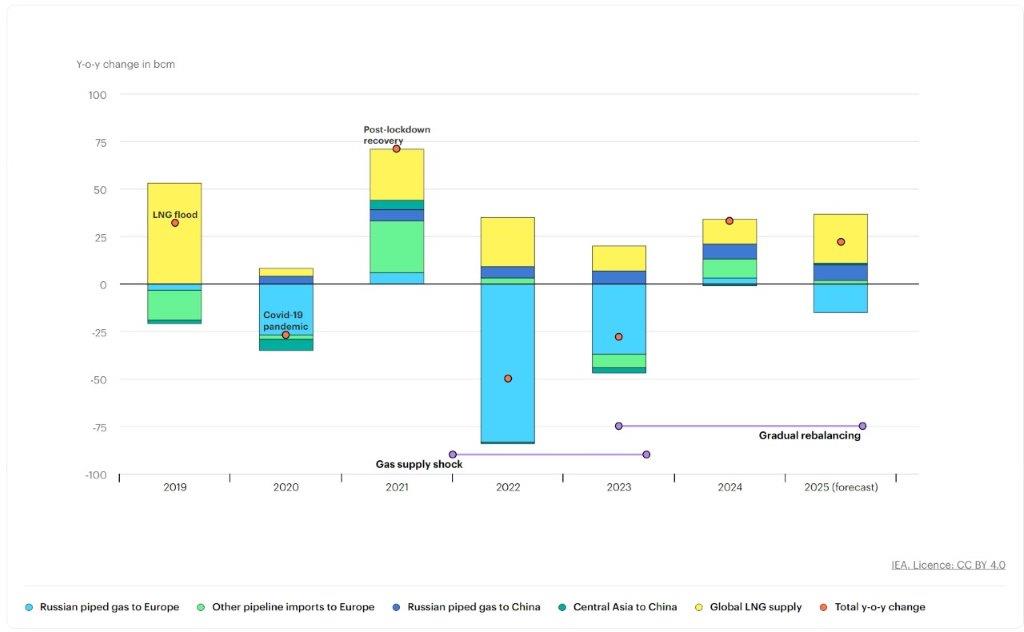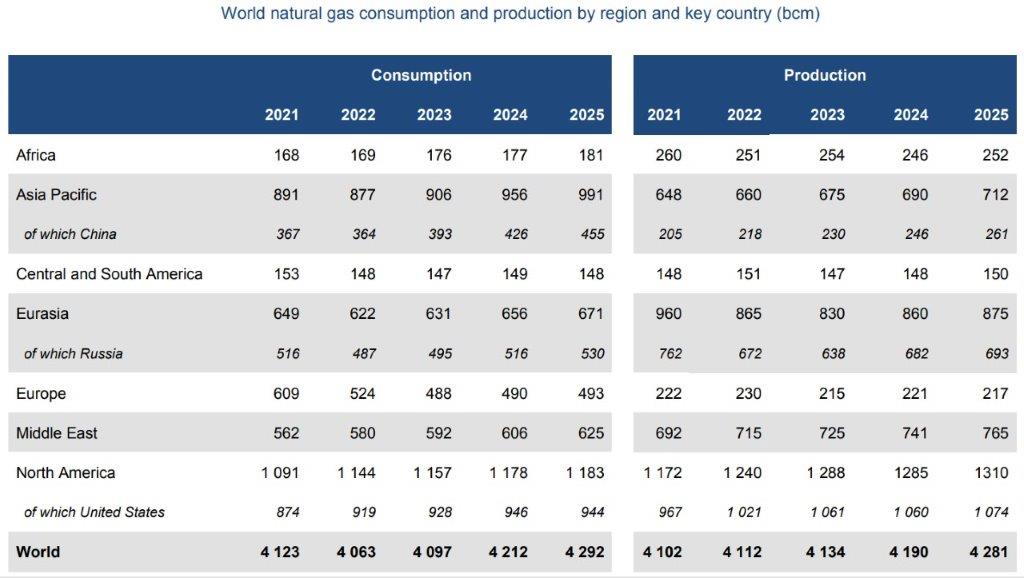
LNG offers reliable, affordable and cleaner alternatives to other fossil fuels. It complements the rapid growth in renewable energy, replacing oil and coal consumption. It is becoming the basis of global energy transition by encouraging decarbonization in developing countries.
Global LNG supply increased by 2.5% (13 billion cubic meters) in 2024. This rate is well below the average growth rate of 8% between 2016 and 2020. Project delays and supply problems at some older manufacturers put pressure on LNG production growth. However, due to many major new LNG projects, especially in North America, it is expected to rise to 5% or just over 25 billion cubic meters in 2025.
The ability of the growth in the LNG supply to meet the demand for the European continent, with the interruption of Russia's pipeline gas delivery to Europe, is carefully monitored. Given their storage capacities, interconnections and access to the global LNG market, this does not pose an immediate supply security risk for European countries. However, Moldova's fragility, which declared a 60-day state of emergency in December before Russia's halt of pipeline gas deliveries, is significantly greater and requires close cooperation with its regional and international partners to ensure energy supply security throughout the winter season. In the Transnistria region, heat and hot water supply cuts for residential consumers have been in effect since January 1.
Specifically, natural gas inventory levels in the European Union fell 15 billion cubic meters year-on-year at the beginning of 2025, potentially increasing the demand for replenishing storage space this summer. Taken together, these factors could result in Europe's higher LNG imports this year and tighten the global gas balance. However, the increasing demand for natural gas from developing countries and the Asian continent will also have a significant impact in this direction. In the chart below, you can see the natural gas trade exchange between 2019 and 2025.

IEA has established a permanent Working Group on Natural Gas and Sustainable Gas Safety (GWP) on gas supply security under the Standing Group on Emergency Issues, which aims to facilitate data and information exchange among its members and promote dialogue between manufacturers and consumers on gas supply security. In April 2025, the IEA will hold an International Summit on the Future of Energy Security in the UK. At the summit, traditional and emerging risks related to energy security, including natural gas, will be discussed. You can see the world natural gas production and consumption quantities in the graph below.

- Log in to post comments

